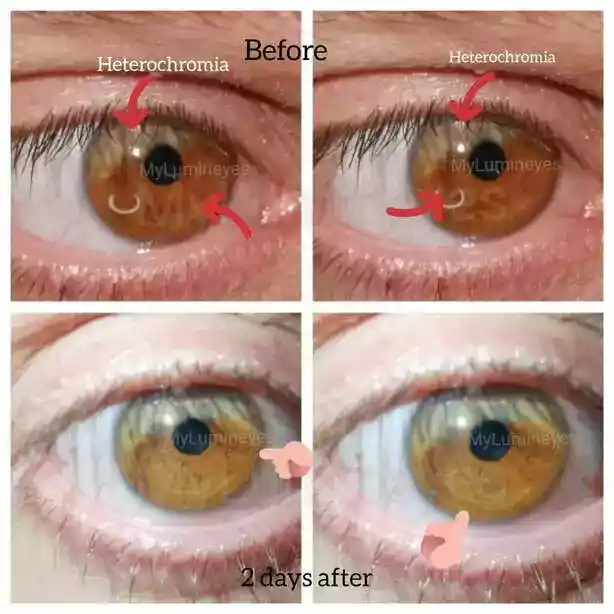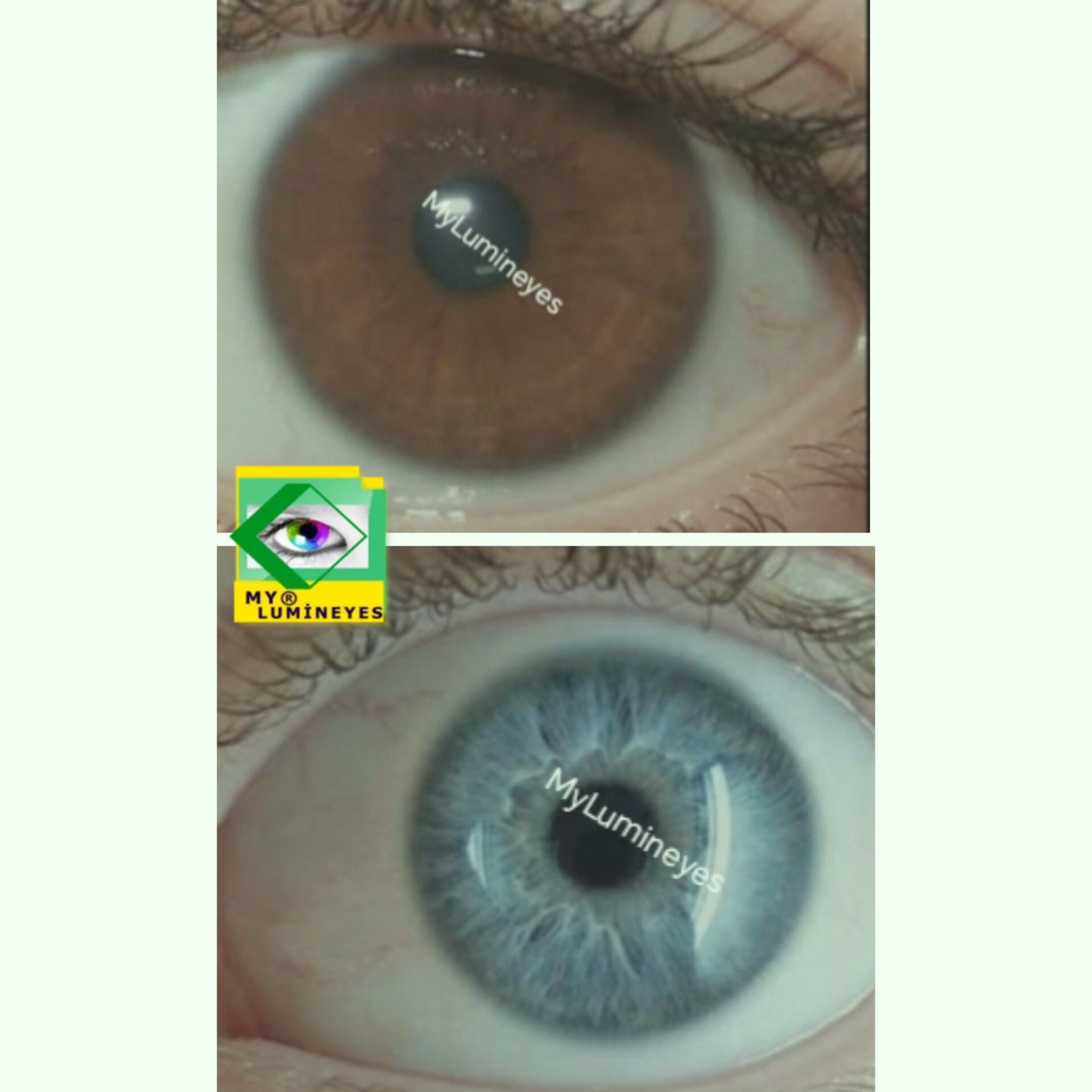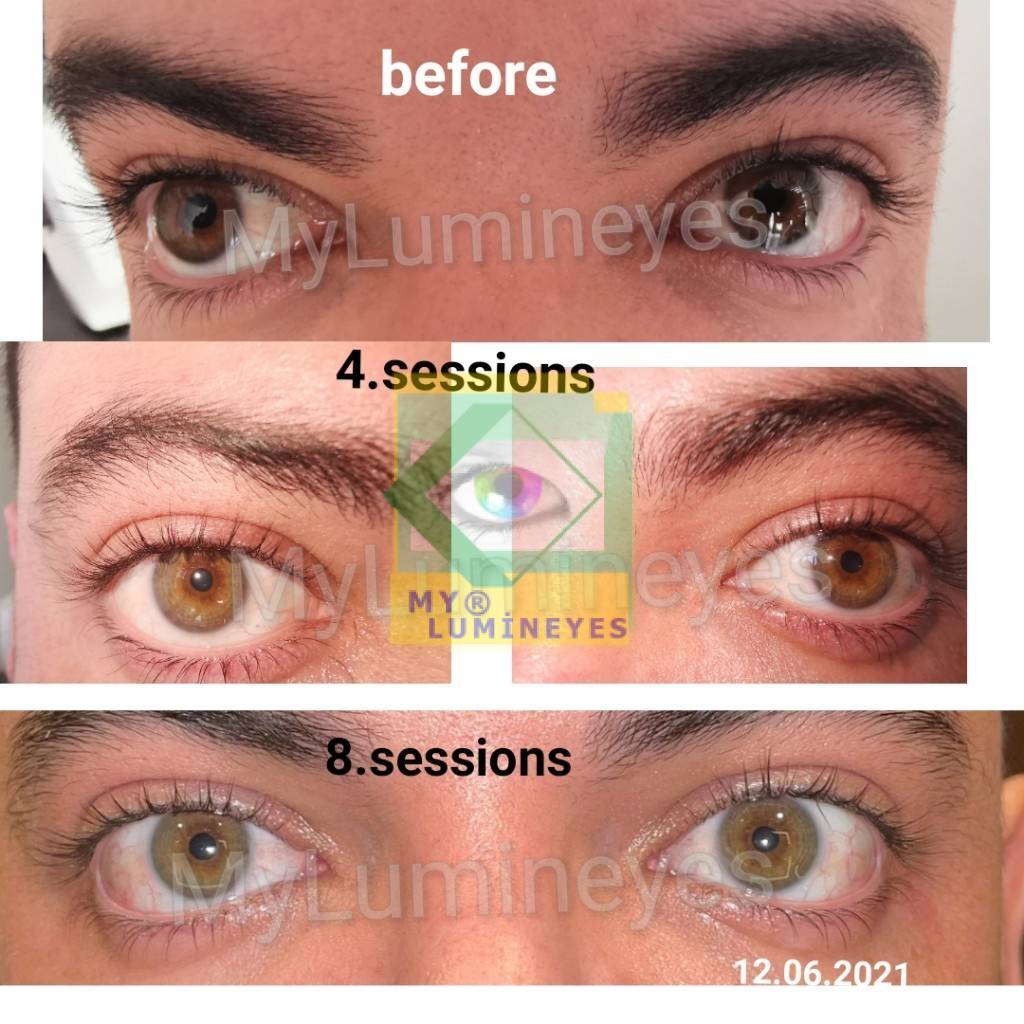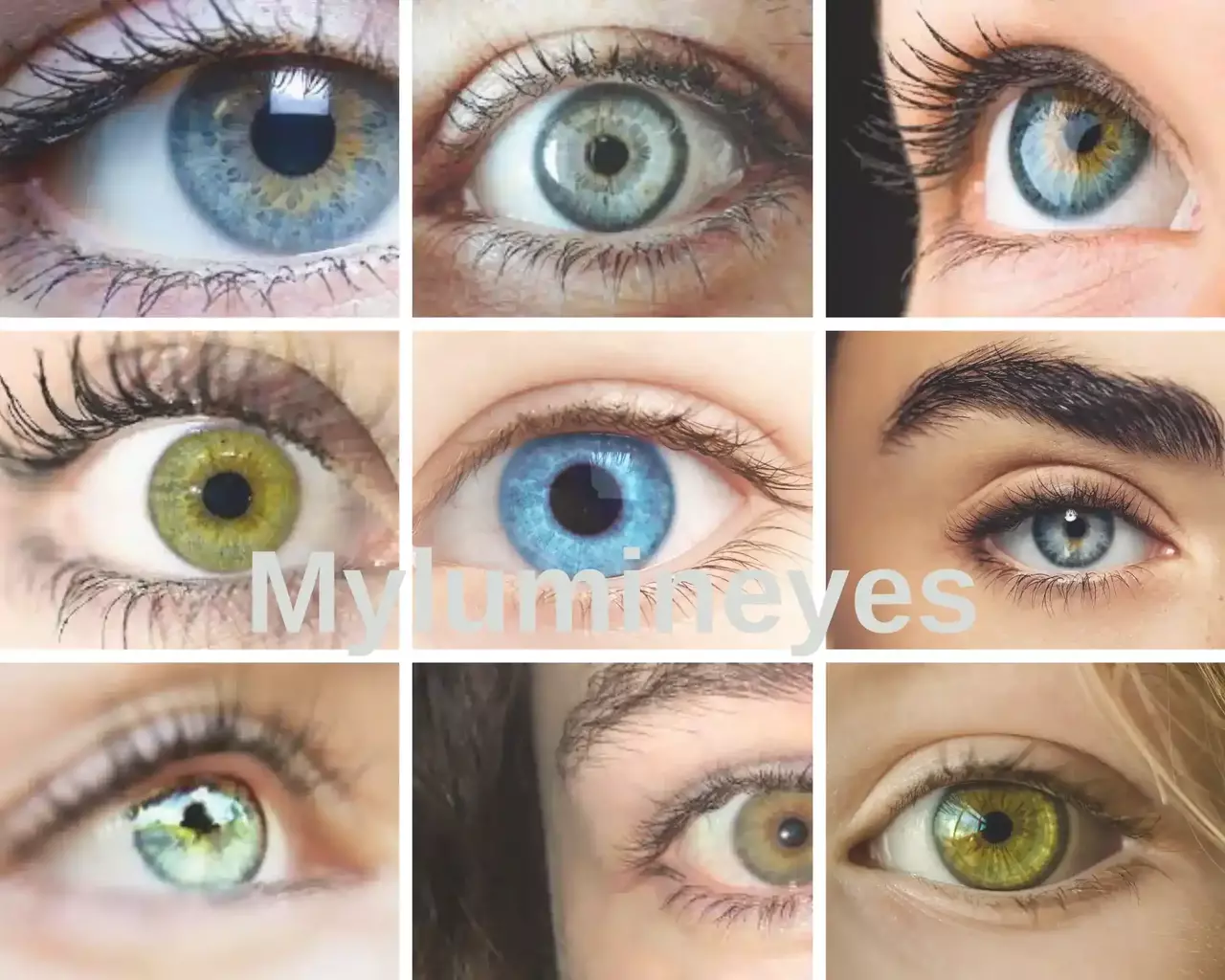Eye color evolution in humans
Scientists believe that the evolution of eye colors and eye color change corresponded to our ancestors’ physical journey from warmer to colder locations. This is because melanin in the eyes is thought to operate as a sun-protective barrier. Conversely, green-eyed people have no green pigment in their irises. Light reflection decides the color we perceive. Lighter eyes contain less melanin hence they absorb less light. Moreover, the top two layers of the iris define the color our eyes see.
The rear layer of everyone’s iris, known as the stroma, is made up of brown pigment regardless of eye color. Scientists have discovered that the color of the eye results from a small fraction of the six billion genetic instructions that make up the visual neurons being inaccurate.
Scientists have shown that the inaccuracy of only a few codes in the 6 billion genetic codes comprising the visual neurons influences the color of the eye.
These mutations allow individuals to be distinguished from one another. The equatorial line runs across the African continent, and this region is exposed to direct sunshine virtually all year round. Direct sunlight provides UV rays and heat, which places pressure on the selection of dark skin color (natural selection). Pigments in the skin, such as melanin, give protection from the sun’s damaging rays. This permits dark-skinned individuals to live longer, breed, and pass on their dark-skinned genes.

We everyone have unique physical qualities. Our physical traits are determined by genetic differences. The new research finds five new and related areas, such as skin, eye, and hair color. Although genes that influence skin color have been extensively investigated in Europe, researchers detected a substantial variance in the MFSD12 gene exclusively among East Asians and Native Americans in this study.
The accumulation of mutations has allowed for the continued evolution of new eye colors.
The dark structure called the iris, located in the centre of the eye, regulates the sun entering the eye and decides the eye color we have owing to the pigments it carries. Individual differences abound in the color of the iris, often known as eye color, ranging from pale blue to dark brown. Common classification for people’s eye colors include brown eye color, green/hazel eye color, or blue eye color. The most often occurring eye color on Earth is brown.
People of European heritage have almost all light-toned eye colors, such as blue and green.
Eye color is a tricky subject. However, until recently, few scientists defined it in this manner. It was once thought that eye color was controlled by a single gene – brown, dominant; blue, recessive. Melanin, or pigment, content in an individual’s iris determines their eye colour. Your eyes will therefore look to be darker the more melanin you possess. The most often occurring eye color worldwide is brown.
Why do we have different eye colors evolution?
Furthermore very important in the formation of our genes is the variation of genes in our family. Particularly in physical characteristics, the gene passed on from parent to child is also active in the person’s biology. Different people’s physical looks might result from genetic coding or other diseases. You’ve undoubtedly seen folks with varying skin tones or people with different eye colors. In anatomy, this color variance, which we see in celebrities, is known as heterochromia.
Heterochromia is caused by an excess or shortage of melanin pigmentation. This can be inherited or caused through genetic mosaicism, chimerism, sickness, or trauma.
Our eye color is determined by genetic differences.
The majority of the genes implicated in eye color are involved in the generation, transportation, and storage of melanin pigment. The amount and quality of melanin in the top layer of our eyes determines the color of our eyes. While the quantity of melanin pigment in persons with brown eyes is enormous, it is significantly lower in those with blue eyes.
BLUE EYES
Richard Sturm, who directed the study, found three SNPs associated with the OCA2 gene, which are believed to be responsible for the blue color. Sturm says that these SNPs are not directly responsible for blue eyes, but they may be linked to the most important cause of the condition.
GREEN EYES
According to Sturm, mutations in the OCA2 gene dictate the quantity of protein the gene generates, with people with brown eyes having more of these proteins than those with blue eyes. For green eyes, a single letter mutation in the DNA sequence is sufficient. In those with green eyes, there is a difference in the number of amino acids that make up the protein. The genes that determine the color of the eyes are likewise closely connected to those that determine the color of the skin.
Early humans supposedly had dark hair and skin, nearly black eyes, and dark complexion. This is so because the genes regulating hair and eye color are near those regulating eye and skin colors.
While brown is the most often occurring eye color, human civilizations all throughout the world document many more different eye hues.
When we talk about genetics, eye color may become a bit murky. Human eye color is a polygenic (created by the action of several genes) property that is not governed by a single gene, as is the case with many other traits.
Various colors of eye color are the result of the interaction of these genes. Due to the lack of selection pressure for dark eyes, several mutations have been retained in the gene pool. This has led to the production of even more distinct eye colors through the combining of various genes from both the mother and the father. The complexion and eyes of the ancestors of Western Europeans were lighter than those of people from other regions of the world.

New eye colors have been able to surface and proliferate throughout time as mutations often accumulate.
Furthermore, new eye color tones have emerged from the pairing of persons with varying tones of eye color with others having distinct eye colors.
Sexual selection may explain the diverse eye colors that have arisen over time. Human mating is typically not random. We can select partners with desirable characteristics. Some people may pick as mates those who have the eye color that they deem more beautiful.
The genes responsible for this eye color can be passed on to their progeny and stay in the gene pool for further generations.
The condition known as blue eye results from an iris lacking melanin. Consequently, the iris is colorless.
Due to the fact that the physical structure of the iris absorbs other wavelengths and reflects only blue ones, the eyes of such creatures seem blue. There are practically no species in nature that can manufacture blue pigment. The combination of blue and yellow wavelengths reflected off the iris, which has less melanin, produces green eyes. Other colors are produced by a similar process. The misconception that infants have “blue eyes” stems from the fact that the melanin in their eyes condenses later.
Eye color Evolution has little to do with living in the north.
Residents of the Siberian area, mostly have brown eyes. A quite recent recessive gene mutation causing blue eyes finds it increasingly difficult as population density moves southward to spread throughout the population. Rather, intermediary colors show themselves; hazel eyes are seen in North Africa, the Mediterranean, and Central Asia.
The frequency of blue eyes in northern Europe is attributable to the geographical expansion of mutant populations and sexual selection.
Moreover, blue eyes are quite uncommon among red-haired individuals.
The gene that regulates eye color is closely associated with the gene that regulates skin color. It is believed that all of our ancient human predecessors had dark brown or practically black eyes and very dark hair (the dark hair gene is also controlled by the eye and skin color genes). Even though brown eyes are more common than any other color in the modern world, people all over the world have different-colored eyes.









